-
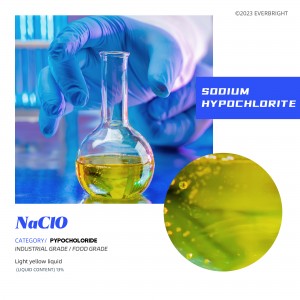
Sodium Hypochlorite
Sodium hypochlorite is produced by the reaction of chlorine gas with sodium hydroxide. It has a variety of functions such as sterilization (its main mode of action is to form hypochlorous acid through hydrolysis, and then further decompose into new ecological oxygen, denaturating bacterial and viral proteins, thus playing a broad spectrum of sterilization), disinfection, bleaching and so on, and plays an important role in medical, food processing, water treatment and other fields.
-
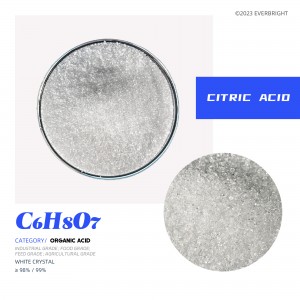
Citric Acid
It is an important organic acid, colorless crystal, odorless, has a strong sour taste, easily soluble in water, mainly used in food and beverage industry, can be used as sour agent, seasoning agent and preservative, preservative, can also be used in chemical, cosmetic industry as an antioxidant, plasticizer, detergent, anhydrous citric acid can also be used in food and beverage industry.
-
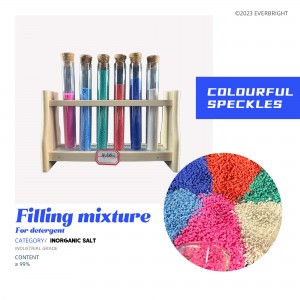
Colourful Speckles
For washing powder embellishment, washing powder manufacturers use color particles to enhance collaborative washing, enhance synthetic washing effect, enhance beauty. Mainly blue, green, red, rose, yellow, orange, purple, ultramarine, pink, golden yellow, red, white and other pearl-shaped hard particles.
-
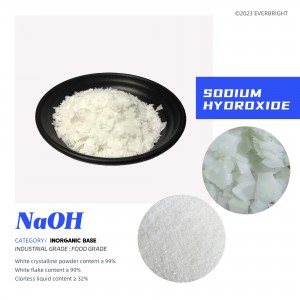
Sodium Hydroxide
It is a kind of inorganic compound, also known as caustic soda, caustic soda, caustic soda, sodium hydroxide has strong alkaline, extremely corrosive, can be used as acid neutralizer, with masking agent, precipitating agent, precipitation masking agent, color agent, saponification agent, peeling agent, detergent, etc., the use is very wide.
-

Sodium Silicate
Sodium silicate is a kind of inorganic silicate, commonly known as pyrophorine. Na2O·nSiO2 formed by dry casting is massive and transparent, while Na2O·nSiO2 formed by wet water quenching is granular, which can be used only when converted into liquid Na2O·nSiO2. Common Na2O·nSiO2 solid products are: ① bulk solid, ② powdered solid, ③ instant sodium silicate, ④ zero water sodium metasilicate, ⑤ sodium pentahydrate metasilicate, ⑥ sodium orthosilicate.
-

Sodium Tripolyphosphate(STPP)
Sodium tripolyphosphate is an inorganic compound containing three phosphate hydroxyl groups (PO3H) and two phosphate hydroxyl groups (PO4). It is white or yellowish, bitter, soluble in water, alkaline in aqueous solution, and releases a lot of heat when dissolved in acid and ammonium sulfate. At high temperatures, it breaks down into products such as sodium hypophosphite (Na2HPO4) and sodium phosphite (NaPO3).
-
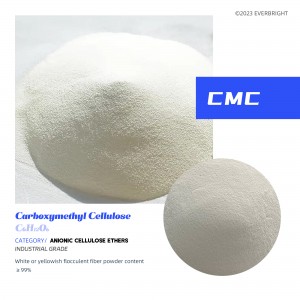
Carboxymethyl Cellulose(CMC)
At present, the modification technology of cellulose mainly focuses on etherification and esterification. Carboxymethylation is a kind of etherification technology. Carboxymethyl cellulose (CMC) is obtained by carboxymethylation of cellulose, and its aqueous solution has the functions of thickening, film formation, bonding, moisture retention, colloidal protection, emulsification and suspension, and is widely used in washing, petroleum, food, medicine, textile and paper and other industries. It is one of the most important cellulose ethers.
-

4A Zeolite
It is a natural alumino-silicic acid, salt ore in the burning, due to the water inside the crystal is driven out, producing a phenomenon similar to bubbling and boiling, which is called “boiling stone” in image, referred to as “zeolite”, used as a phosphate-free detergent auxiliary, instead of sodium tripolyphosphate; In the petroleum and other industries, it is used as a drying, dehydration and purification of gases and liquids, and also as a catalyst and water softener.
-
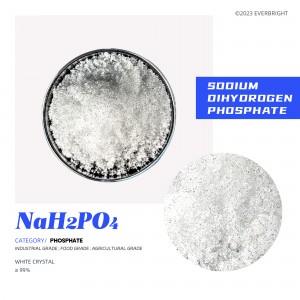
Sodium Dihydrogen Phosphate
One of the sodium salts of phosphoric acid, an inorganic acid salt, soluble in water, almost insoluble in ethanol. Sodium dihydrogen phosphate is a raw material for the manufacture of sodium hempetaphosphate and sodium pyrophosphate. It is colorless transparent monoclinic prismatic crystal with a relative density of 1.52g/cm².







